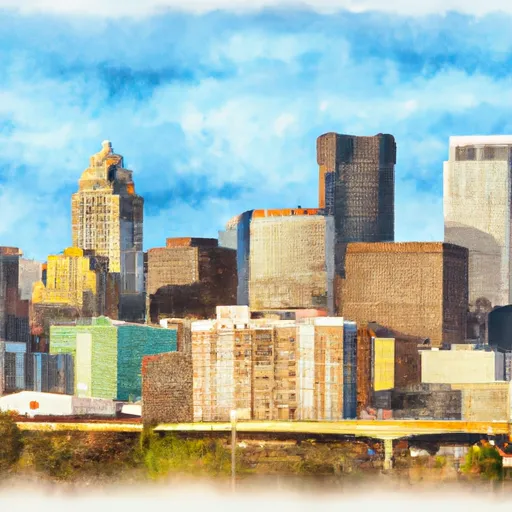-
 Snoflo Premium
Snoflo Premium
Get unlimited access to all our content
With no Ad interruptions! - Start Your Free Trial Login with existing account
Saint-Paul
Eden Index
Climate
6.6
•
Recreation
5.2
•
Community
2.3
•
Safeguard
5.1/10

Saint Paul, Minnesota is the state capital and second-most populous city in Minnesota. It experiences a continental climate with warm summers and cold winters. Summers are typically mild to hot, with average temperatures ranging from 75°F to 85°F. Winters are cold and snowy, with average temperatures ranging from 10°F to 30°F and frequent subzero temperatures.
Located along the banks of the Mississippi River, Saint Paul benefits from a rich hydrology. The river provides opportunities for various water-based activities, such as boating, fishing, and kayaking. The city is also home to several lakes, including Como Lake and Phalen Lake, which offer additional outdoor recreational opportunities, including swimming and picnicking.
Saint Paul boasts a wide range of outdoor recreation opportunities beyond its waterways. The city is known for its extensive park system, with over 170 parks providing options for hiking, biking, and walking trails. Notable parks include the popular Como Park, featuring a zoo, conservatory, and golf course, as well as the Mississippi National River and Recreation Area, offering scenic views and wildlife observation.
Overall, Saint Paul's climate, hydrology, and outdoor recreation options make it an attractive destination for those seeking both natural beauty and recreational activities.
What is the Eden Index?
The Snoflo Eden Index serves as a comprehensive rating system for regions, evaluating their desirability through a holistic assessment of climate health, outdoor recreation opportunities, and natural disaster risk, acknowledging the profound impact of these factors on livability and well-being.
Climate Health Indicator (CHI): 6.6
Saint-Paul receives approximately
827mm of rain per year,
with humidity levels near 83%
and air temperatures averaging around
8°C.
Saint-Paul has a plant hardyness factor of
4, meaning
plants and agriculture in this region thrive during a short period during spring and early summer. Most
plants will die off during the colder winter months.
By considering the ideal temperature range, reliable water supplies, clean air, and stable seasonal rain or snowpacks, the Climate Health Indicator (CHI) underscores the significance of a healthy climate as the foundation for quality living.
A healthy climate is paramount for ensuring a high quality of life and livability in a region, fostering both physical well-being and environmental harmony. This can be characterized by ideal temperatures, reliable access to water supplies, clean air, and consistent seasonal rain or snowpacks.
Weather Forecast
Streamflow Conditions
Upper Mississippi-Crow-Rum
Area Rivers
Upper Mississippi-Crow-Rum
Snowpack Depths
Upper Mississippi-Crow-Rum
Reservoir Storage Capacity
Upper Mississippi-Crow-Rum
Groundwater Levels
Recreational Opportunity Index (ROI): 5.2
The Recreational Opportunity Index (ROI) recognizes the value of outdoor recreational options, such as parks, hiking trails, camping sites, and fishing spots, while acknowledging that climate plays a pivotal role in ensuring the comfort and consistency of these experiences.
Access to outdoor recreational opportunities, encompassing activities such as parks, hiking, camping, and fishing, is crucial for overall well-being, and the climate plays a pivotal role in enabling and enhancing these experiences, ensuring that individuals can engage in nature-based activities comfortably and consistently.
Camping Areas
| Campground | Campsites | Reservations | Toilets | Showers | Elevation |
|---|---|---|---|---|---|
| Whitebreast - Red Rock Lake | 130 | 828 ft | |||
| Wallashuck - Red Rock Lake | 80 | 833 ft | |||
| Elk Rock State Park | 75 | 843 ft | |||
| North Overlook - Red Rock Lake | 55 | 796 ft | |||
| Woodenfrog - Kabetogama State Forest | 60 | 1,126 ft | |||
| McCarthy Beach State Park | 90 | 1,393 ft | |||
| Button Box ? George Washington State Forest | 12 | 1,400 ft | |||
| Ivans - Red Rock Lake | None | 708 ft | |||
| Roberts Creek Park | None | 803 ft | |||
| Howell Station - Red Rock Lake | 140 | 704 ft |
Nearby Fishing
Nearby Ski Areas
Catastrophe Safeguard Index (CSI):
The Catastrophe Safeguard Index (CSI) recognizes that natural disaster risk, encompassing floods, fires, hurricanes, and tornadoes, can drastically affect safety and the overall appeal of an area.
The level of natural disaster risk in a region significantly affects safety and the overall livability, with climate change amplifying these risks by potentially increasing the frequency and intensity of events like floods, fires, hurricanes, and tornadoes, thereby posing substantial challenges to community resilience and well-being.
Community Resilience Indicator (CRI): 2.3
The Community Resilience Indicator (CRI) recognizes that education, healthcare, and socioeconomics are crucial to the well-being of a region. The CRI acknowledges the profound impact of these elements on residents' overall quality of life. By evaluating educational resources, healthcare accessibility, and economic inclusivity, the index captures the essential aspects that contribute to a thriving community, fostering resident satisfaction, equity, and social cohesion.

